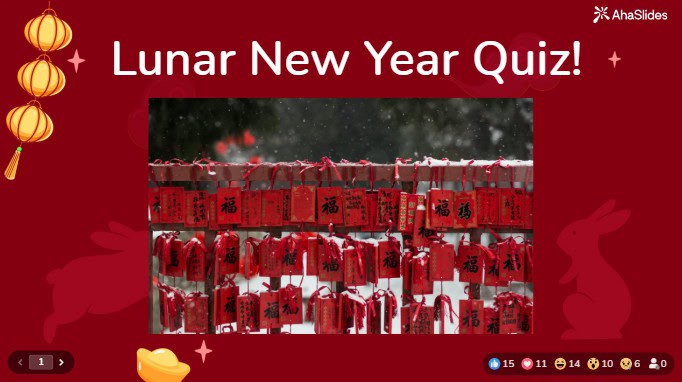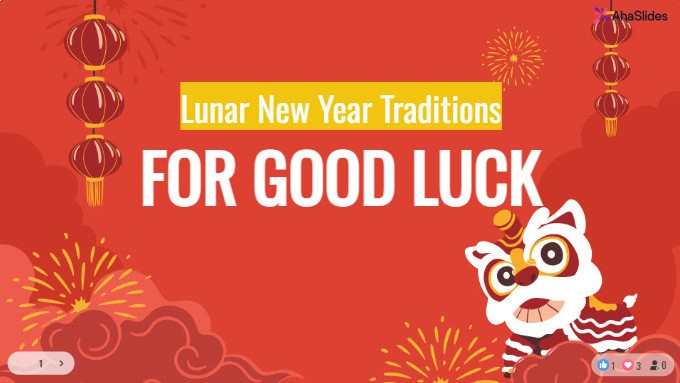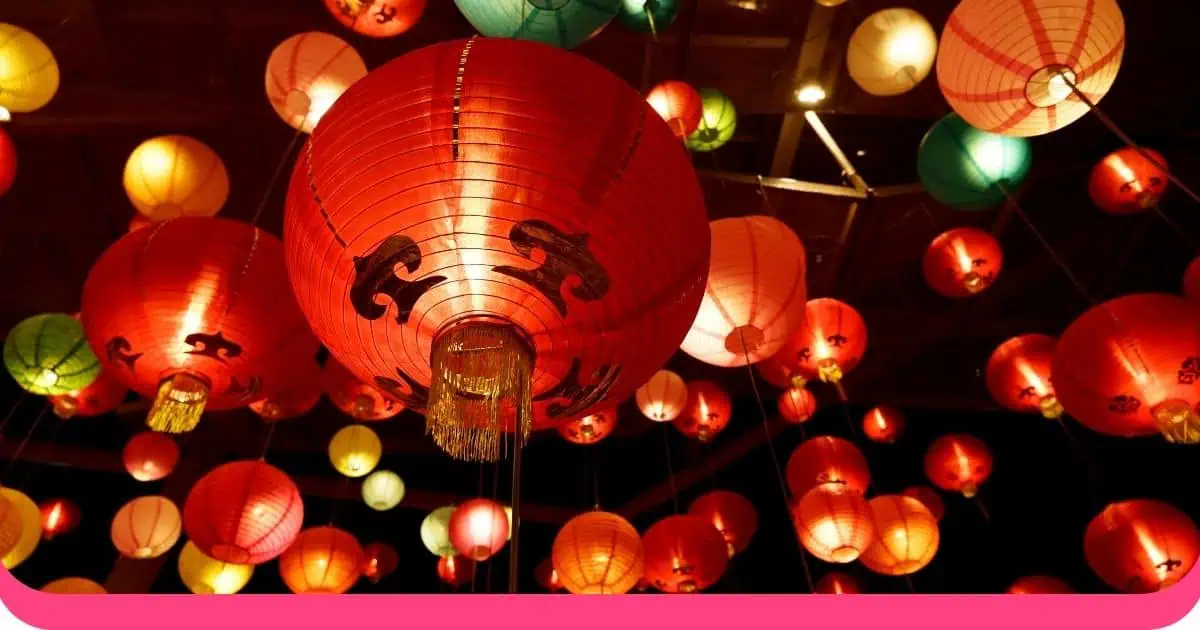Wishing you and your family a prosperous new year.
In lieu of celebration, let's have some fun with the 20 questions for hosting the ultimate Chinese New Year quiz (or Lunar New Year quiz).
Table of Contents
Free New Year Quiz!
Get all the questions below on cost-free live quiz software. Take it and host it within 1 minute!

How the Chinese New Year is Celebrated
The Chinese Lunar New Year, also known as Spring Festival, is one of the most important holidays in Chinese culture.
During this time, Chinese people and communities worldwide celebrate with colourful traditions like lighting firecrackers to ward off bad vibes, exchanging red envelopes containing money for luck, cleaning their homes, gathering with family and wishing loved ones a prosperous year ahead.
Diverse types of special foods are also enjoyed throughout the celebration depending on the region you're in. Dragon dances and the New Year's celebration live show are a must if you are from the Chinese community.
20 Chinese New Year Trivia Questions and Answers
Here are 20 Chinese New Year quiz questions split into 4 distinct rounds. Make them part of any New Year's quiz!
Round 1: Chinese Zodiac Quiz
- Which 3 are NOT animals of the Chinese zodiac?
Horse// Goat // Bear // Ox // Dog // Giraffe // Lion // Pig - Lunar New Year 2026 is the year of the what?
Rat // Tiger // Goat // Snake // Horse - The 5 elements of the Chinese zodiac are water, wood, earth, fire and… what?
Metal - In some cultures, what zodiac animal replaces the goat?
Deer // Llama // Sheep // Parrot - If 2025 is the Year of the Snake, what is the order of the following 4 years?
Rooster (4) // Horse (1) // Goat (2) // Monkey (3)
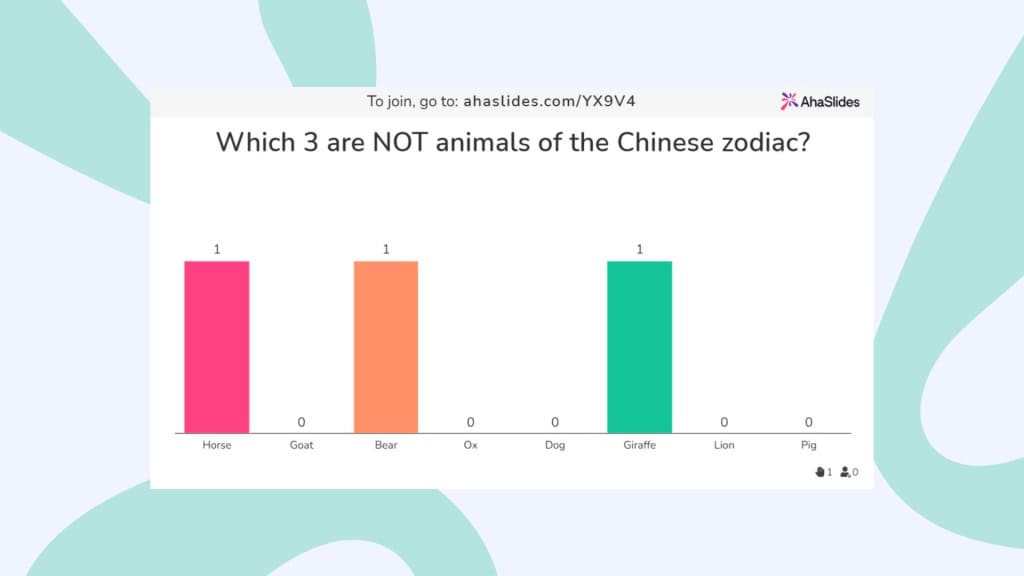
Round 2: New Year Traditions
- In most countries, it is traditional to remove bad luck before the Lunar New Year by doing what?
Sweeping the house // Washing the dog // Lighting incense // Donating to charity - What colour of the envelope would you expect to see at Lunar New Year?
Green // Yellow // Purple // Red - Match the country to the name of its Lunar New Year
Vietnam (Tết) // Korea (Seollal) // Mongolia (Tsagaan Sar) - How many days does the Lunar New Year in China typically last?
5 // 10 // 15 // 20 - The final day of the Lunar New Year in China is known as the Shangyuan Festival, which is the festival of what?
Lucky money // Rice // Lanterns // Oxen
Round 3: New Year's Food
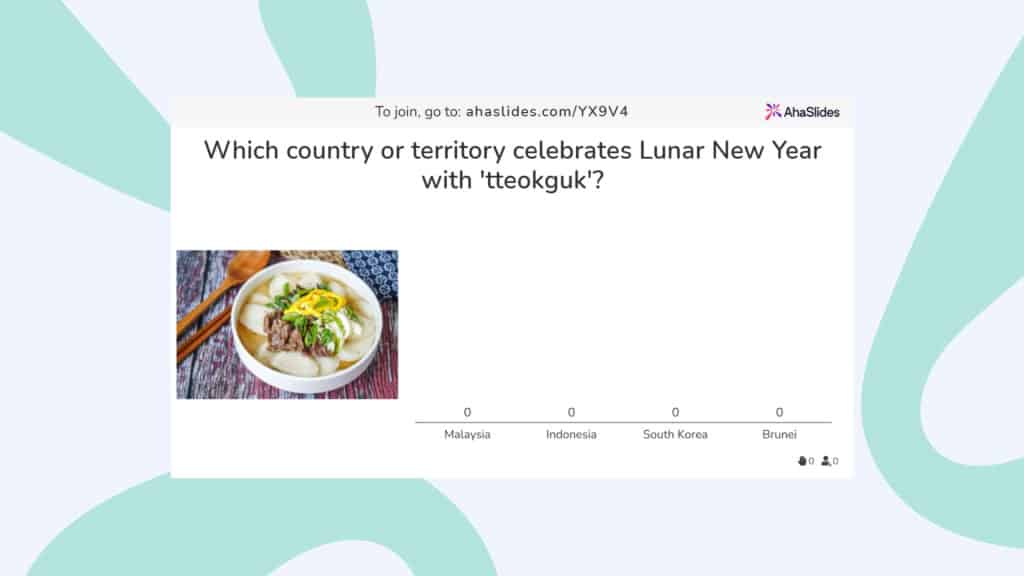
- Which country or territory celebrates Lunar New Year with 'bánh chưng'?
Cambodia // Myanmar // The Philippines // Vietnam - Which country or territory celebrates Lunar New Year with 'tteokguk'?
Malaysia // Indonesia // South Korea // Brunei - Which country or territory celebrates Lunar New Year with 'ul boov'?
Mongolia // Japan // North Korea // Uzbekistan - Which country or territory celebrates Lunar New Year with 'guthuk'?
Taiwan // Thailand // Tibet // Laos - Which country or territory celebrates Lunar New Year with 'jiǎo zi'?
China // Nepal // Myanmar // Bhutan - What are the 8 Chinese foods? (Anhui, Cantonese, Fujian, Hunan, Jiangsu, Shandong, Szechuan and Zhejiang)
Round 4: New Year Legends and Gods
- The heavenly emperor who rules over Lunar New Year is named after which gemstone?
Ruby // Jade // Sapphire // Onyx - According to legend, how were the 12 zodiac animals first decided?
A game of chess // An eating competition // A race // A water right - In China, which of these is used to scare off the legendary beast 'Nian' on the day of the new year?
Drums // Firecrackers // Dragon dances // Peach blossom trees - It's traditional to leave 'zào táng' out in the house in order to appease which god?
Kitchen God // Balcony God // Living Room God // Bedroom God - The 7th day of the Lunar New Year is 'ren ri' (人日). Legend says it's the birthday of which creature?
Goats // Humans // Dragons // Monkeys
💡Want to create a quiz but have a very short time? It's easy! 👉 Just type your question, and AhaSlides’ AI will write the answers:
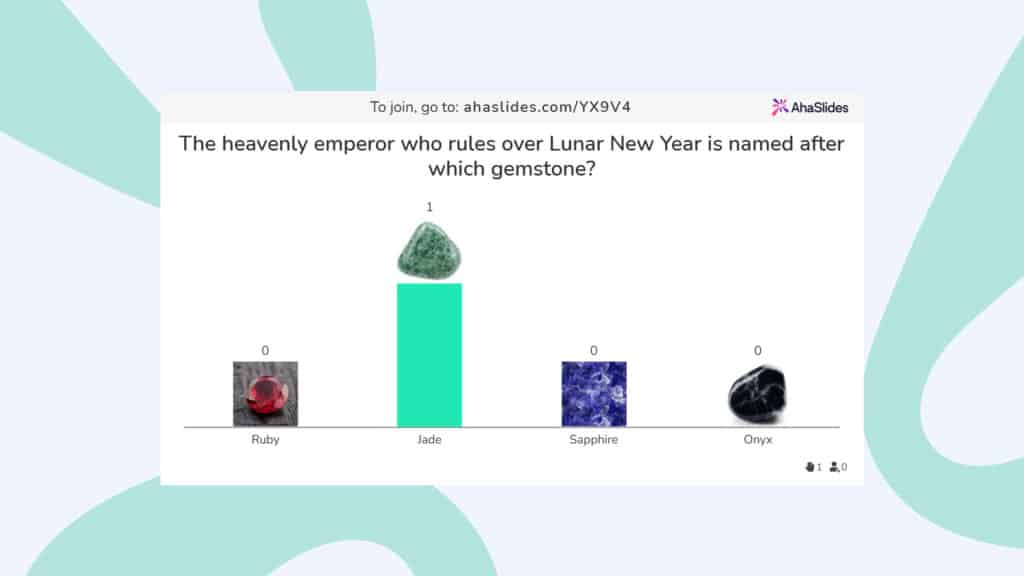
Tips for Hosting a Chinese New Year Quiz
- Keep it diverse - Remember, it's not just China that celebrates Lunar New Year. Include questions about other countries in your quiz, such as South Korea, Vietnam and Mongolia. There are hugely interesting questions to be pulled from each!
- Be sure about your stories - Stories and legends tend to transform over time; there's always another version of each Lunar New Year story. Do some research and make sure that the version of the story in your Chinese New Year quiz is well-known.
- Make it varied - It's always best, if possible, to split your quiz into a set of rounds, each carrying a different theme. One random question after the next can be draining after a while, but a set amount of questions within 4 differently themed rounds keeps the engagement high.
- Try different question formats - Another great way to keep engagement high is to use different question types. The standard multiple choice or open-ended question loses its lustre after the 50th repetition, so try some image questions, audio questions, matching pair questions and correct order questions to switch it up!
Free Quiz Templates to Get You Started
